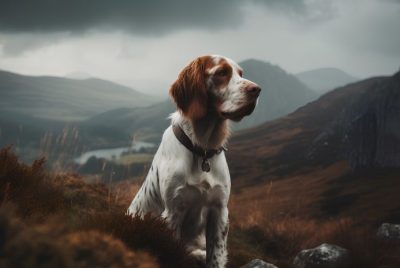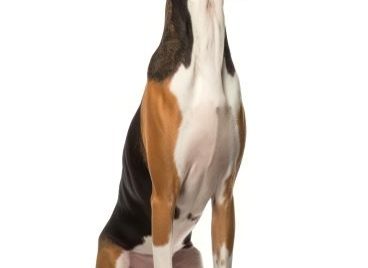10 Favorite Big Dog Breeds
I’m excited to share my passion for large dogs with you today. As an enthusiast and advisor on big dog breeds, I’ve always been enamored by these gentle giants. The feeling of having a big, fluffy canine companion is unrivaled, and I believe everyone should experience it at least once in their lives. So, let’s dive into the world of big dog breeds, shall we?
Why Choose Big Dogs
Big dogs, with their protective instincts and huge hearts, are perfect for active individuals and families. They add a sense of security to any home they’re part of. Yes, they do need more space and food, but the unconditional love they give in return makes it all worth it.
The Magic of Big Dog Breeds
There’s something almost magical about big dogs. Their presence is comforting, their devotion absolute, and their antics, despite their size, are often endearingly clumsy. Above all, the companionship they offer is profound and fulfilling.
Factors to Consider Before Adopting Big Dogs
While big dogs are wonderful, they come with unique considerations. They require significant space, a balanced diet for healthy growth, regular exercise, grooming needs, and potential health concerns specific to large breeds.
Favorite Big Dog 1: Saint Bernard
- History: Saint Bernards originally hail from Switzerland, bred by monks for rescue operations in the Alps. Their keen sense of direction and resistance to cold made them invaluable during snowstorms.
- Traits: Known for their gentle temperament and patience, Saint Bernards are especially good around children. They sport a muscular body, a broad head with expressive eyes, and a short coat that’s dense and more reddish-brown.
- Care: Saint Bernards need a cool environment due to their thick coats. They require regular grooming and exercise to maintain a healthy weight. Early socialization and training are also vital for this breed.
Favorite Big Dog 2: Great Dane
- History: The Great Dane, despite its name, is of German origin. Originally bred to hunt boar, this breed is known for its great size and gentle nature.
- Traits: Great Danes are known as gentle giants. They have a muscular yet sleek body, expressive eyes, and a long tail. They’re also known for being incredibly friendly and patient, and they often think they’re lap dogs, despite their size.
- Care: Great Danes need daily exercise, but are also happy to lounge around the house. Due to their size, they need a lot of food, and should be fed multiple small meals a day to prevent bloat, a common health issue in the breed.
Favorite Big Dog 3: Newfoundland
- History: The Newfoundland breed originated in Canada as working dogs for fishermen. Their strength and swimming ability made them invaluable for rescues and pulling in nets.
- Traits: Newfoundlands are known for their sweet-natured temperament, strength, and affinity for water. They have a thick, water-resistant coat, and massive webbed feet.
- Care: Regular grooming is required to maintain the health of their thick coat. Exercise is also important, especially swimming, which is a favorite activity of this breed.
Favorite Big Dog 4: Rottweiler
- History: Rottweilers were originally “drover” dogs in Germany, meaning they were used to herd livestock and pull carts laden with butchered meat to market.
- Traits: Rottweilers are confident, calm, and incredibly intelligent dogs. Though they might seem intimidating, they are very affectionate with their families.
- Care: Rottweilers require consistent training and socialization from a young age. They also need plenty of exercise to keep them healthy and happy.
Favorite Big Dog 5: Mastiff
- History: Mastiffs are among the oldest breeds with a history that dates back to ancient times. They were bred as war dogs and guardians, and their size and strength have been prized for millennia.
- Traits: Despite their size, Mastiffs are quite docile and generally easygoing. They’re gentle, affectionate, and make excellent family pets.
- Care: Mastiffs need regular daily exercise to prevent obesity, but they’re not as high-energy as some other breeds. They also require regular grooming to keep their coat healthy.
Favorite Big Dog 6: Bernese Mountain Dog
- History: The Bernese Mountain Dog hails from Switzerland, originally used as a farm dog for various tasks, including herding cattle, pulling carts, and acting as a watchdog.
- Traits: These dogs are known for their tri-colored, silky long fur and their good-natured, friendly, and loyal temperament.
- Care: Bernese Mountain Dogs need regular exercise, and they love outdoor activities. They also require regular grooming to keep their beautiful coats in good condition.
Favorite Big Dog 7: Alaskan Malamute
- History: As one of the oldest Arctic sled dogs, the Alaskan Malamute played a crucial role in the lives of Inuit tribes, aiding in hunting and transporting goods.
- Traits: They are robust and resilient with a thick coat to keep them warm in harsh weather. Known for their playful, energetic personalities, they are friendly and affectionate, making them great family dogs.
- Care: Alaskan Malamutes require vigorous daily exercise to stay healthy and content. Regular brushing is also needed due to their dense, double coat.
Favorite Big Dog 8: Irish Wolfhound
- History: As the name suggests, this breed hails from Ireland and was historically used in war and hunting. They were highly valued for their prowess in hunting wolves and elk.
- Traits: Irish Wolfhounds are one of the tallest dog breeds, but they’re also known for their gentle and friendly nature. Despite their imposing size, they have a certain grace and gentleness about them.
- Care: Irish Wolfhounds require moderate exercise, a good diet to maintain health, and regular grooming to keep their rough coat in top condition.
Favorite Big Dog 9: Leonberger
- History: This breed was developed in the city of Leonberg in Germany. They were bred to resemble the lion in the town’s crest, hence the name Leonberger.
- Traits: Leonbergers are large, strong, and muscular, yet they’re incredibly gentle and often get along well with children and other animals. They have a lush, water-resistant double coat and a black-masked face.
- Care: This breed needs regular exercise and mental stimulation, as well as frequent brushing to maintain their double coat.
Favorite Big Dog 10: Anatolian Shepherd
- History: The Anatolian Shepherd originates from Turkey and was primarily used as a livestock guardian dog, a role they excel in due to their size, strength, and protective instincts.
- Traits: These dogs are rugged, durable, and able to withstand harsh weather conditions. They are very protective, loyal, and somewhat reserved.
- Care: Anatolian Shepherds require a significant amount of exercise and mental stimulation. Their short coats need minimal grooming, but regular check-ups are necessary due to potential health issues.
Choosing the Right Big Dog Breed
Personality Compatibility
Each big dog breed has its unique personality traits, and it’s crucial to consider whether these align with your lifestyle and personality. For instance, if you lead an active lifestyle, a dog breed like the Alaskan Malamute that requires lots of exercises would be a good match.
Space and Exercise Needs
Large dogs need more space to move around comfortably, and some breeds need substantial daily exercise to stay healthy and happy. Do you have a big backyard? Are you able to provide multiple walks or play sessions each day?
Grooming and Health Considerations
Large dogs often require more grooming, and they may have specific health concerns. You should be ready for this commitment.
Training and Socialization
Big dogs usually need more exercise and may require specific training needs. Training is essential for all dogs, but especially for large breeds, which can be a handful if not properly trained.
Conclusion
Choosing to adopt a big dog is a big decision, but it’s also a deeply rewarding one. These large dog breeds, each with its unique history, traits, and care needs, offer so much love, companionship, and protection. I hope this guide helps you in your journey to find your perfect large furry friend.
FAQs
Q1: Which big dog breed is the most gentle?
Saint Bernards and Great Danes are often referred to as “gentle giants” due to their friendly and gentle nature.
Q2: Are big dogs good for families?
Absolutely! Many big dogs, such as the Newfoundland and the Bernese Mountain Dog, are known for their love of children and their protective instincts.
Q3: Do all big dogs require lots of exercises?
While all dogs require regular exercise, the intensity and duration differ. Breeds like the Alaskan Malamute require vigorous daily exercise, while breeds like the Mastiff are more laid-back.
Q4: How much space do I need to keep a big dog comfortable?
The bigger the dog, the more space they’ll appreciate. At a minimum, they should have enough indoor space to move around comfortably, and outdoor access for exercise.
Q5: Are there health issues specific to large dog breeds?
Yes, large dog breeds can be prone to specific health issues such as hip dysplasia and certain heart conditions. It’s essential to get your dog from a responsible breeder who screens for these issues.




